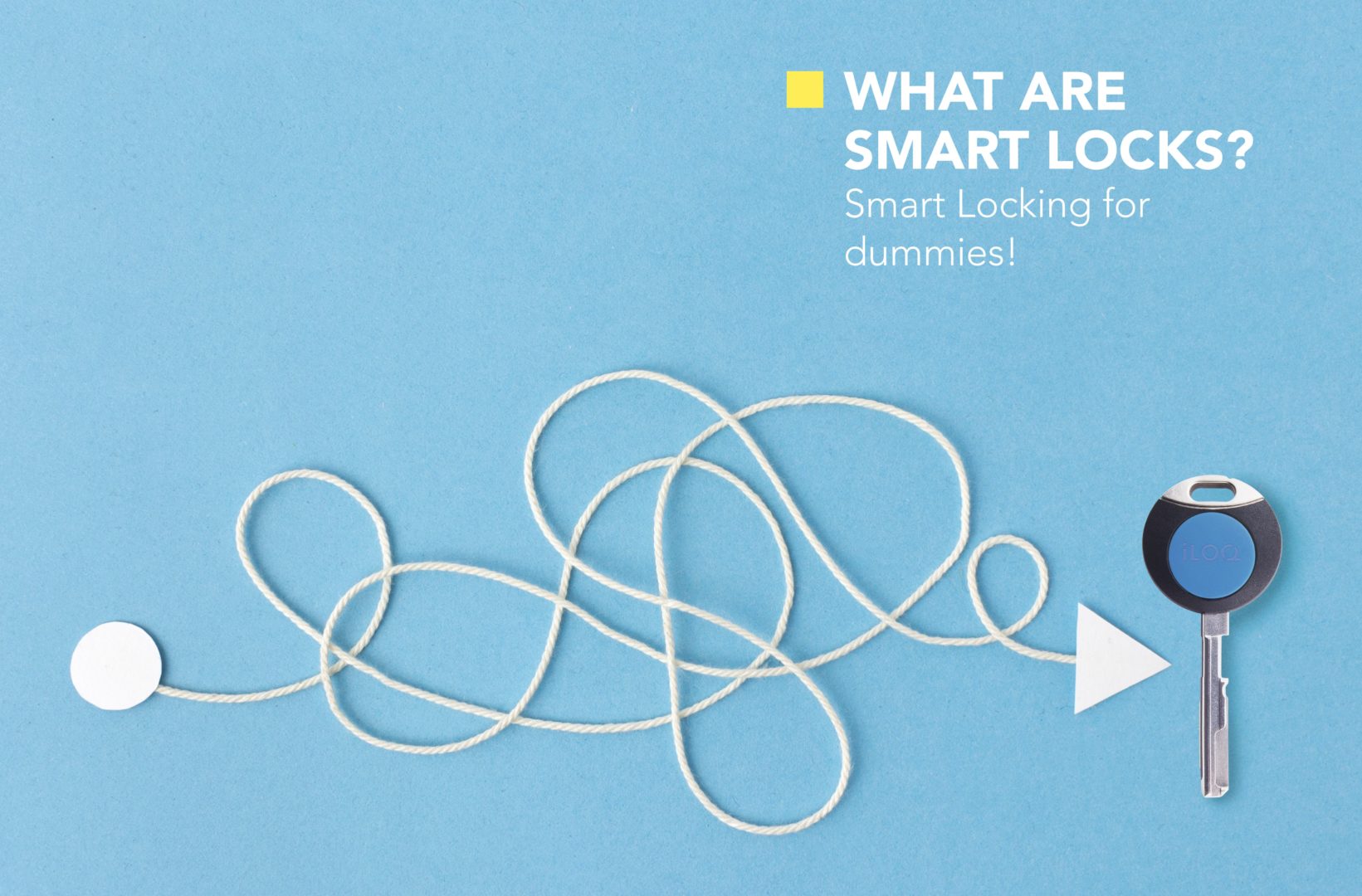What are smart locks? Smart locking for dummies!

For centuries, mechanical locks have been one of the most effective and widely used forms of access control. Typically, they need two main components to function: a lock cylinder and a key. Seems simple enough. But, unfortunately, the challenges with mechanical locking systems are increasing at an alarming rate. For example, how do you prevent keys from being copied? What do you do when a key is lost? How do you deal with the huge number of keys and access rights in large properties? How do you reduce impact on the environment and drive down lifecycle costs?
Hence, the introduction of smart locks – electromechanical devices that lock and unlock doors when they receive authorization instructions from an encrypted digital or mobile ‘key’. This key doesn’t necessarily need to be a physical key as we know it. It can also be, for example, a tag, a pin code or even a phone.
Digital keys
In a digital locking system, a physical key can be inserted into a lock cylinder. Data between the lock cylinder and the key’s microchip is transmitted with strong encryption. When access is granted, the lock can be opened by turning the key. When the key is removed from the cylinder, the lock closes again. The process is similar if a tag or pin code is used with a ‘reader’.
Mobile keys
In a mobile locking system, a smartphone running a mobile app wirelessly performs the authentication needed to automatically unlock the door. Customers who don’t have a compatible NFC-enabled smartphone can use a key fob. This is a token which receives updated access rights through a phone via Bluetooth.
Unbeatable benefits of smart locking systems
Lost keys are no longer a problem
What happens if a key gets lost? With smart locking systems, there’s no need to worry about the security of your premises. Access rights of lost, stolen or unreturned keys can be easily removed and re-issued. With no need to change or re-key any locks, or change any of the keys still in use, high levels of security are maintained while administration procedures and costs are minimized.
Save resources
Smart locking cylinders and keys can be reused and securely reprogrammed. These environmentally friendly solutions save resources and reduce metal waste.
No need to change batteries
Some smart locking systems are smarter than others! There are self-powered digital and mobile locking systems in the market that require no batteries or hard-wiring of additional access-control systems. The power needed for granting access rights with digital locking systems is generated by the motion of inserting the key into the lock. The power needed to confirm access rights and open locks with mobile locking systems comes from a smartphone running an app. Access rights to all property locks can be remotely shared and multiple sites can be consolidated into one secure cloud-based software platform. This reduces maintenance, saves resources and eliminates battery waste.
One key is all you need
A single digital or mobile key can be programmed with all the access rights of a given property – including door locks, high security locks, elevator key switches and padlocks. These reusable keys can be reprogrammed any number of times, without restrictions.
Save costs over the lifecycle
Easy-to-use software provides a simple and cost-effective way to view, control and expand access rights. And smart purchasers don’t simply look at the purchase price; they look at the bigger picture and see the importance of a lower total cost of ownership, for example, over a 10- or 20-year life span. The huge potential for savings creates a fast return on investment.
Boosted property value
With total control over access rights, next-to-no maintenance and reduced costs over the entire lifecycle, property values receive a healthy boost.
Hopefully this post has given you a little insight into the world of smart locks and digital and mobile locking systems. To learn more, check our website. Or get in touch with our sales team to find out how you can maximize the security of your property while minimizing costs. And keep following this blog. Next time, we’ll talk about how smart locking systems improve security.


